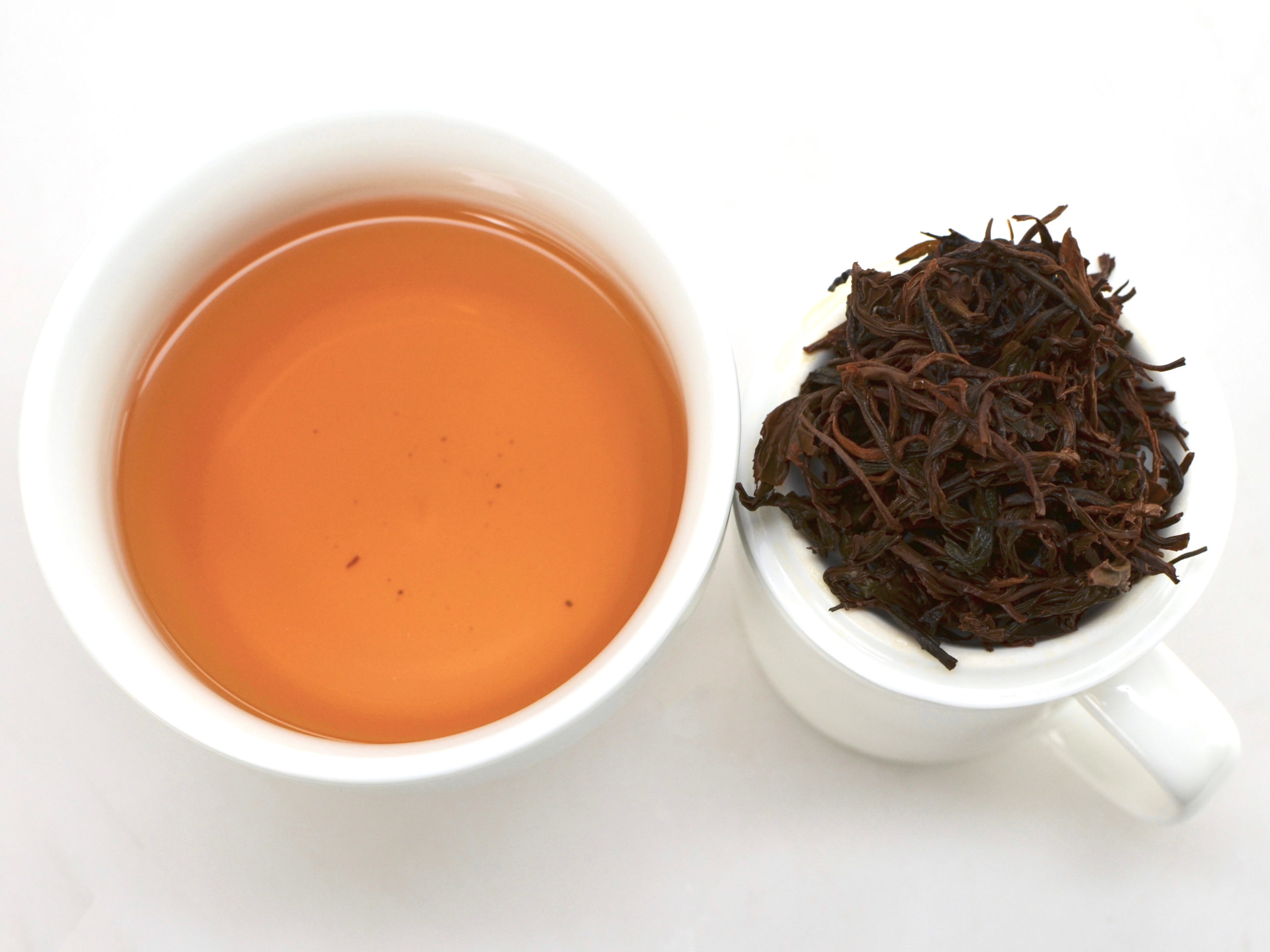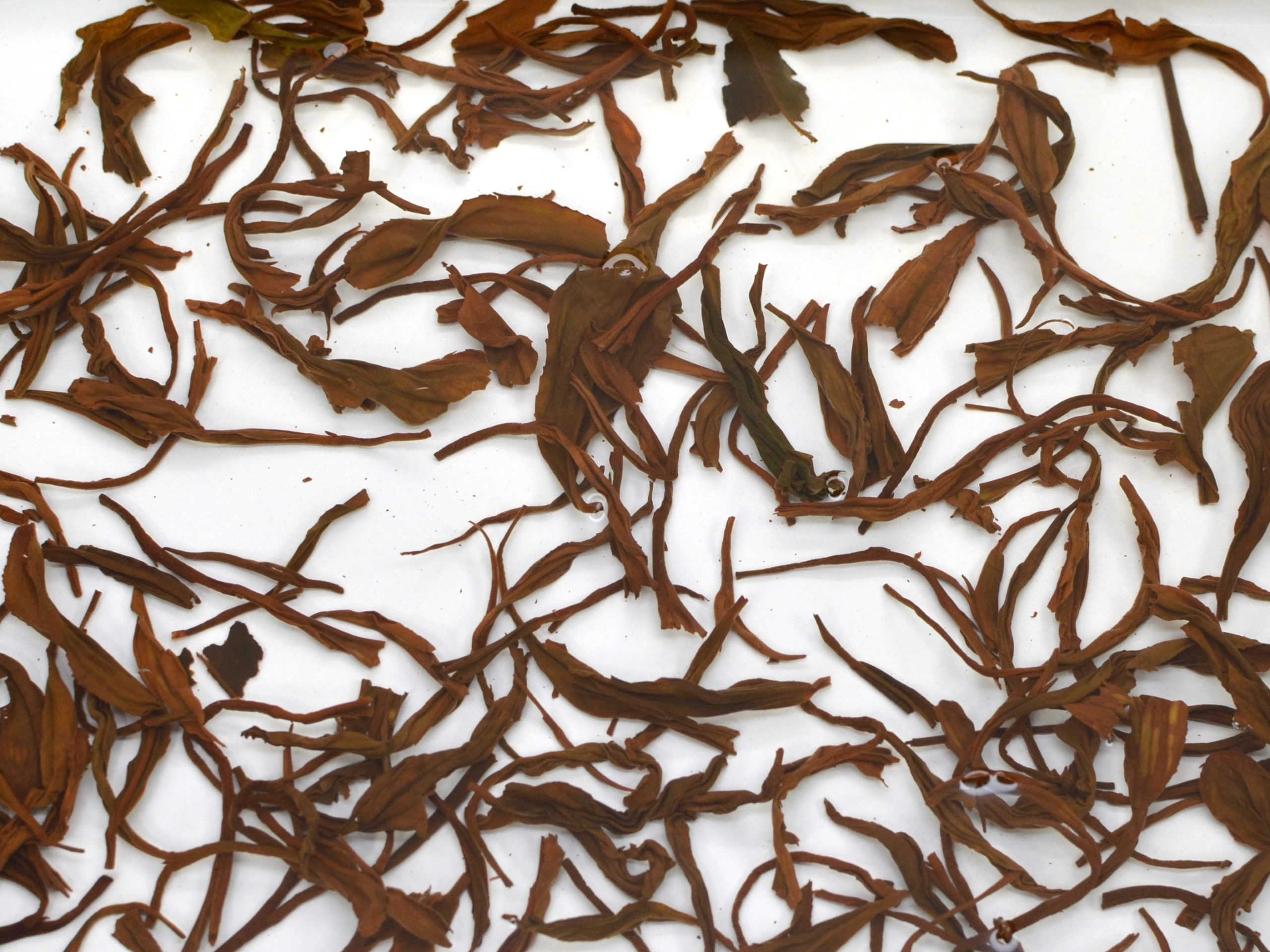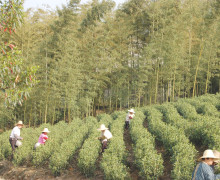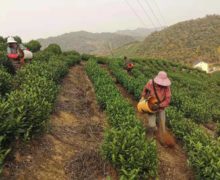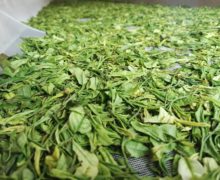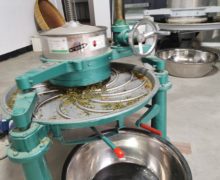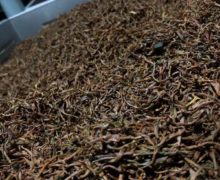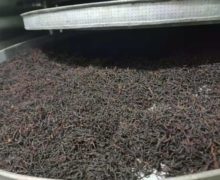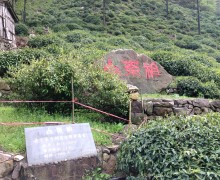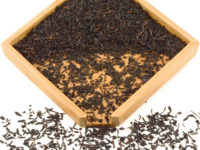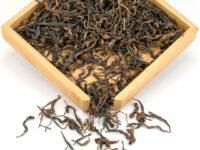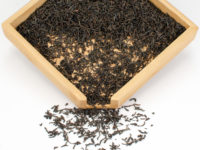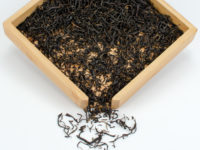Anji Hong (Anji Black)
Black Tea 2025
New and unconventional black tea with malty aromatics, a mellow body, and fruit-like sweetness.
Anji Hong is made using the same amino acid-rich cultivar as Anji Baicha green tea.
- Tea Origin
- Anji County, Huzhou City, Zhejiang Province, China
- Tea Bush
- Baiye #1 (White Leaf #1)
- Tea Maker
- Yu Shunhu
- Harvest Time
- Early April
- Plucking Standard
- One bud, two leaves
For years, the pale jade leaves of Anji Baicha green tea have been a staple in our catalog with their springy floral lightness and rich amino acid content. Now, you can see how these flavors transform when the same leaves are processed into the stunning Anji Hong black tea. Under oxidation, the unique character of the Baiye #1 tea bush cultivar develops into a rosy-amber brew with a sweet aroma reminiscent of malt, honey and molasses. Longer infusions deepen the flavor into the darker and fruitier register, but Anji Hong remains uncharacteristically delicate for a black tea.
The unique character of Anji Hong’s tea cultivar
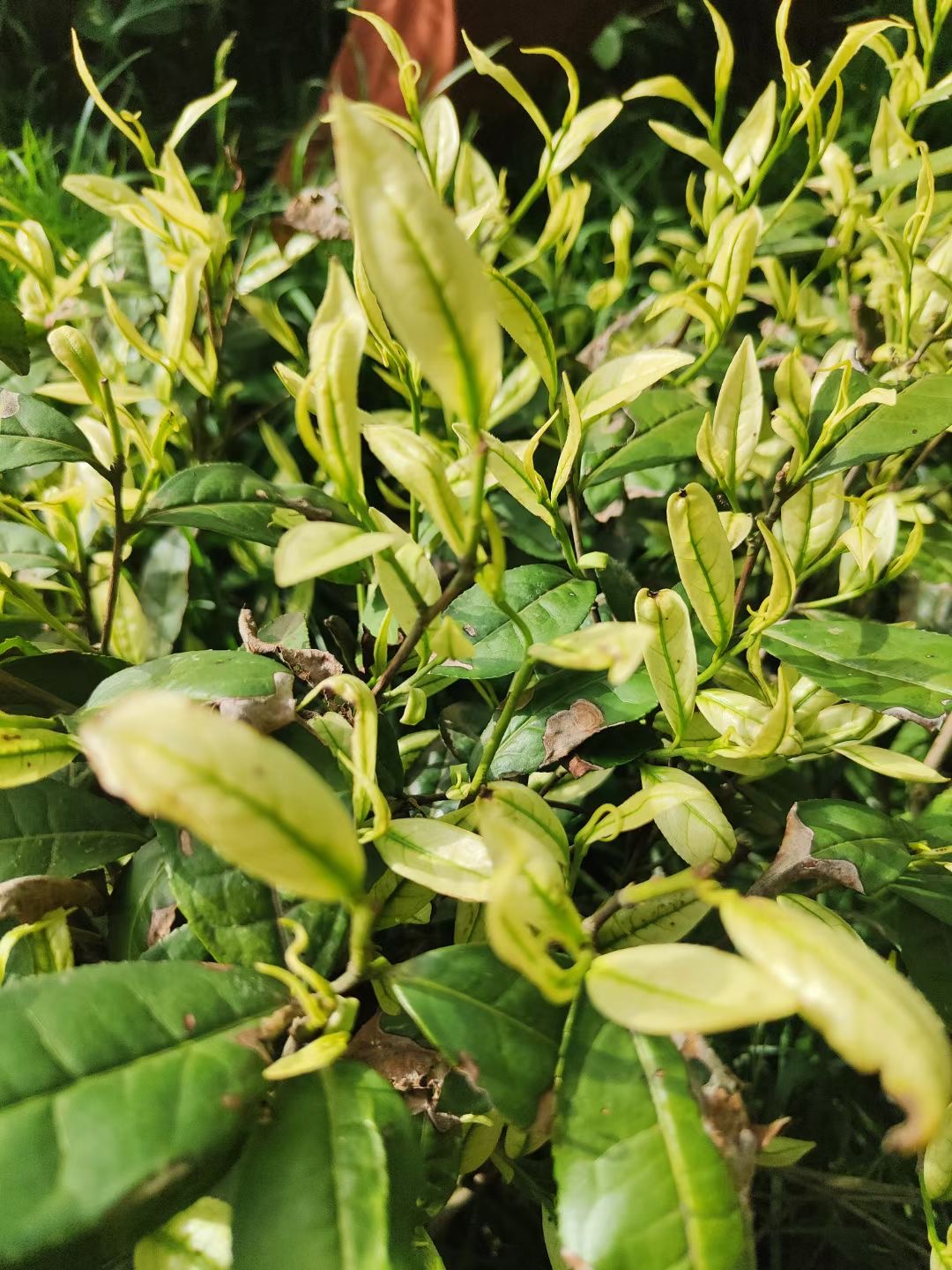
The pale jade leaves of Baiye #1 are unique in their high amino acid content, which contributes to the sweetness and calming effect of their infusion. Some studies have estimated that Baiye #1 leaves contain approximately three to five times the amount of amino acid as found in other varieties. The leaves are at the lightest in color and richest in amino acids in the early spring, before temperatures climb above 25 degrees Celsius. Once the temperature warms beyond this point, the leaves become noticeably greener and have changed in flavor. Our Anji Hong black tea comes from the spring season to preserve the light, delicate Baiye #1 character, harvested in mid-April with one bud and two leaves. Leaves at this stage of growth have a more substantial body that lends itself well to the rich, caramel flavors of black teas.
Recent changes in black tea production in China
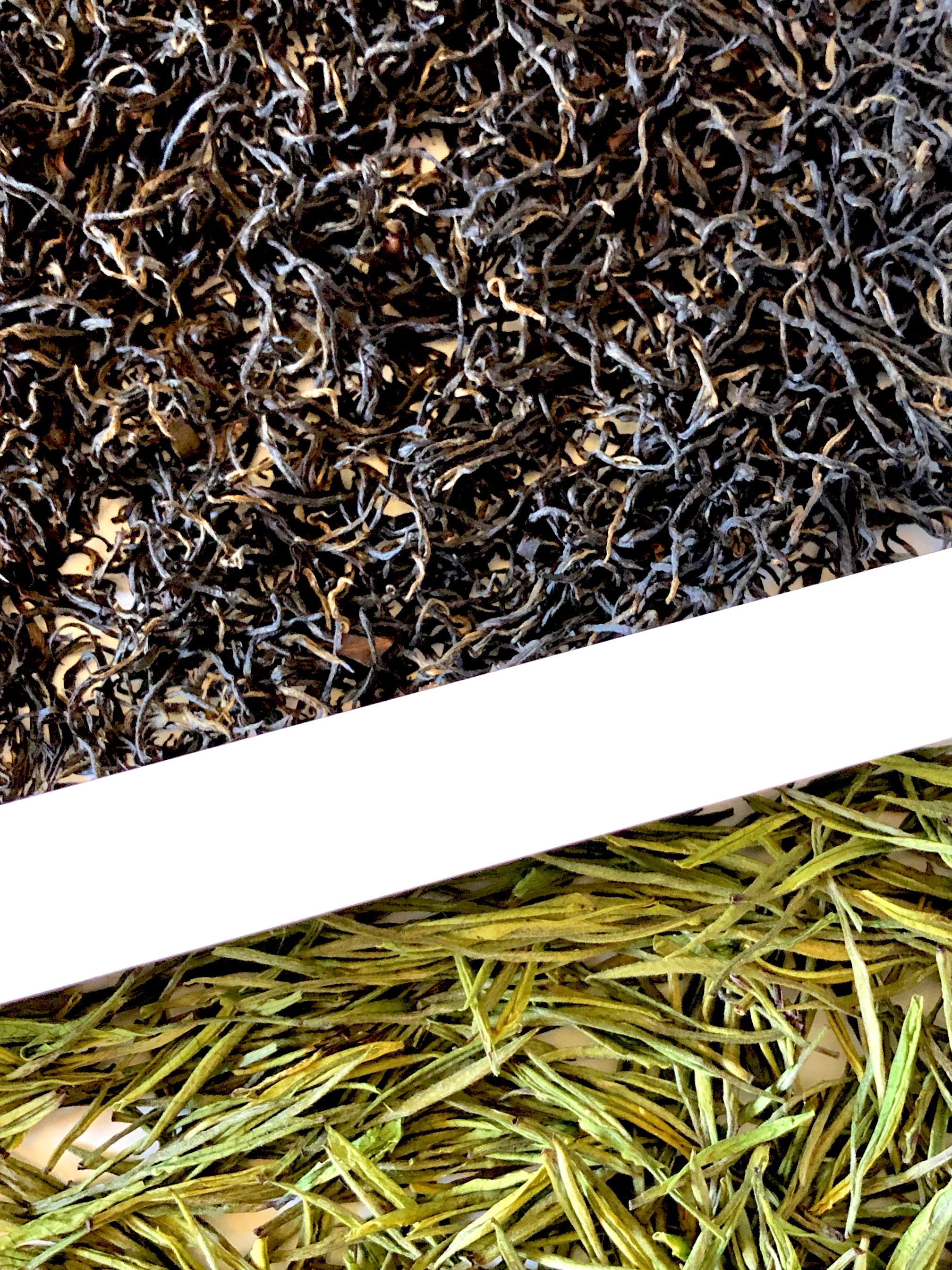
Although Chinese black tea was historically produced as a commercial export product, usually made with large, old leaves for a strong flavor, in recent years, China has seen a domestic increase in popularity of high-end black teas, made with the same vigor of high quality teas, using hand picking and buds with young leaves. . As a result, many producers have begun making black tea versions of their own green teas. Anji Hong is one outcome of this trend and first appeared on the tea market in the 2010s. “Anji” refers to the tea’s provenance in Anji county in Zhejiang province and “hong”, meaning “red”, indicates the processing style. Note the Chinese hongcha (lit. “red tea”) is translated into English as “black tea.”
The long history of Anji Baicha green tea
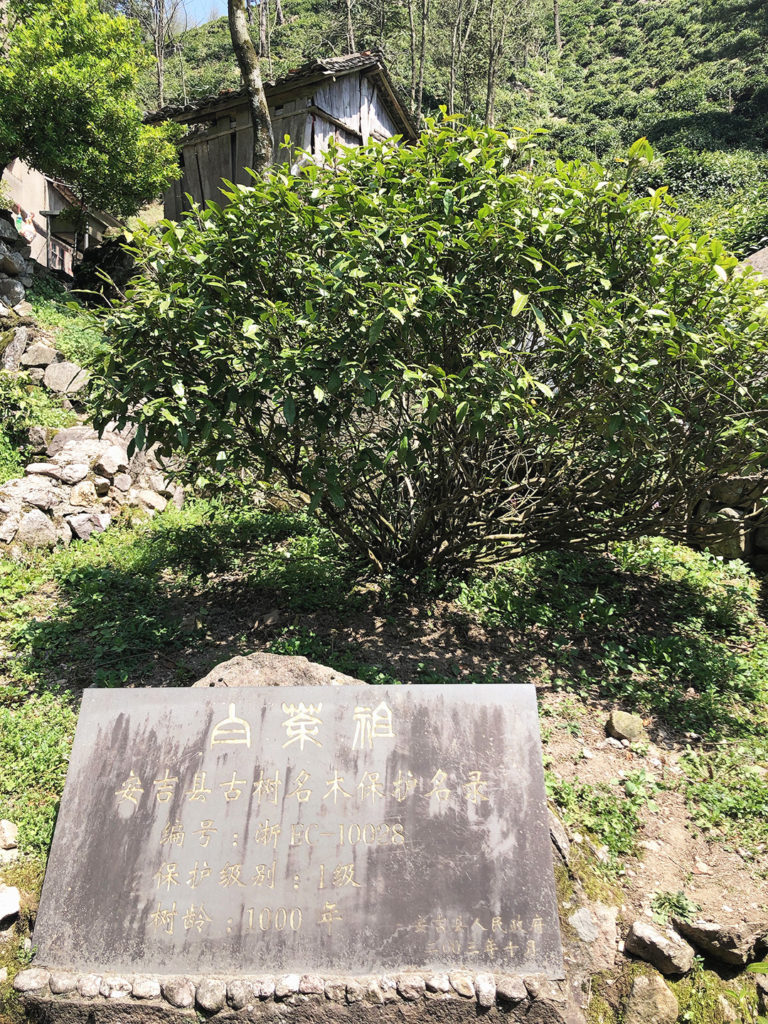
This tea’s history extends at least as far back as the Song Dynasty with the famous emperor Song Huizhong (1082-1135). Renowned both as an artist and as an ardent tea lover, he wrote a book about tea and mentioned the pale, jade tea leaves of “Baicha.” In addition, Lu Yu (733–804), the famous tea sage and writer of the world’s first book on tea during the Tang Dynasty, described the Anji area, where this tea originates, as a treasure of tea. However, he did not mention a specific tea or source. It took 900 years for tea scholars and tea masters to put the two together to realize they were talking about the same tea and discover the still-living Baicha bushes in Anji County of Zhejiang Province.
It has taken decades of effort (starting in the early 1980s) to propagate enough tea plants from the motherbushes, found in Tianhuangping, to have a commercial crop. Since then, Anji Baicha has become the most sought after green tea today due to its limited production and extensive history in the tea world. All Baicha bushes today are descended from two mother bushes, only one of which is still living. The remaining mother bush has now become something of a Mecca for devoted Chinese tea drinkers.
No chemical fertilizer, pesticide, or herbicide was used in the production of this tea. Click here to read more about our promise to fair trade and the environment.


